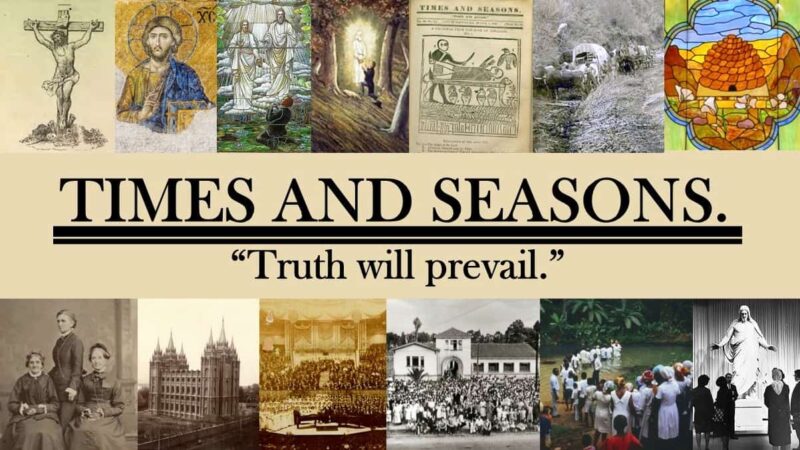The history of the Church around the world is still a developing field and while Mexico is one of the countries that has received attention, Fernando Gomez‘s A Documentary History of the Church of Jesus Christ of Latter-Day Saints in Mexico, 1875-1946 shows that there is still more to learn and discover about the history of the Church in Mexico. In a recent interview with Gomez at the Latter-day Saint history blog From the Desk, more about the early history of the Church in Mexico was discussed, focusing on the events of the 1930s that led up to the schism known as the Third Convention.
Members of the Church in the early 20th century faced several different challenges. In the interview, Fernando Gomez listed many of these:
Here were some of the major challenges they faced:
- The Mexican Revolution of 1910
- The Cristero war (a religious conflict)
- Distance from Mexico City to Salt Lake City
- Isolation from Church Headquarters
- Lack of resources such as scriptures in Spanish and hymnbooks
- Lack of missionaries and funds to support the mission
- Lack of adequate meeting sites
Conflicts like the Mexican Revolution and policies in Mexico that prevented non-citizens from acting as leaders in churches meant that most of the time, the Mexican Saints were left to fend for themselves while not entirely sure what was in their authority to do.
The leader of the Mexican mission for several decades was a man named Rey Lucero Pratt, and though he wasn’t able to be present in Mexico for significant amounts of time, he worked to lead from afar and to stay in touch as much as possible. He was a beloved leader who did much for the Latter-day Saints:
Rey Lucero Pratt was the grandson of Parley P. Pratt and son of Helaman Pratt. Rey grew up in Colonia Dublán, where he learned the Spanish language and learned to love the Mexican people and culture. He gave continuous assistance despite the many challenges he faced. His yearly marathon travels to the Mexican Saints and his charisma helped the local Saints develop faith and testimony.
He died unexpectedly in 1931, and his successor (Antoine R. Ivins) was called from among the Latter-day Saints leaders in Utah. As a Utahan, Ivins was also legally barred from serving actively as a leader in the church in Mexico, and he largely ignored members there, creating a sense of isolation and neglect among Mexican Latter-day Saints.
One effort the Latter-day Saints in Mexico worked on during this era was a system of sharing finances and held regional meetings to discuss how to handle church affairs:
Mexican Saints developed a system of funds called Tostones to build houses of prayer (church buildings) and other necessities. They also held two so-called conventions in the 1930’s in order to meet the demands of the growth they were experiencing. …
The so-called conventions were nothing more than priesthood meetings assembled to discuss the problems and needs of the local priesthood brethren.
These conventions are interesting, because the historical record has traditionally portrayed these meetings as times when Mexican Saints demanded greater attention and resourcing from Salt Lake City, along with having a native Mexican called as the leader over the Church in Mexico (i.e., someone who could actually serve in the role in a legal capacity). Gomez has worked to demonstrate that this was not the case with these first two conventions:
My account is based on a written document recorded on the date it was held and does not petition or demand that a Mexican be called to preside over the work of the gospel in Mexico.
Historians and writers have used oral interviews to create a distorted history of the Mexican Saints. The First and Second Conventions were held under the leadership of Isaías Juárez, who was in charge of the work in central Mexico and thus was able call these two meetings of the local leaders.
The reason the history was blurred is because of the Third Convention, which was the beginning of a split in the church, where 1/3 of the members of the church in Mexico creating their own church that could respond to their needs more directly.
Eventually, however, most of the Third Convention reunited with the Church:
Arwell L. Pierce was called as Mission President in 1942, with the strict focus being on trying to repair relations with the Mexican Saints. After four years of working to gain the trust of the leaders of the local members, they were able to hold a historic conference with both sides of the schism, and Pierce had convinced the Church that it was necessary for the Prophet, Jorge Alberto Smith, to come down and attend as well, in order to close this negative chapter in Mexican Church history.
It’s an episode of history that isn’t often discussed (though it is in Saints, vol. 3), but played a huge role in the history of the Church in Mexico.
For more about the history of the Church in Mexico, head on over to From the Desk and read the full interview with Fernando Gomez.

Comments
2 responses to “The 1930s Crisis in the Church in Mexico”
Good essay; thx for posting. One quibble: in the opening, you refer to “the events of the 1830s . . “; evidently you are referring to the 1930 conventions.
Good catch! Thank you Raymond. I’ve fixed it now. One of the problems of writing a blog piece about the 1930s while working on projects focused on the 1830s outside of the blog is that it gets really easy to mix those up while typing, haha.